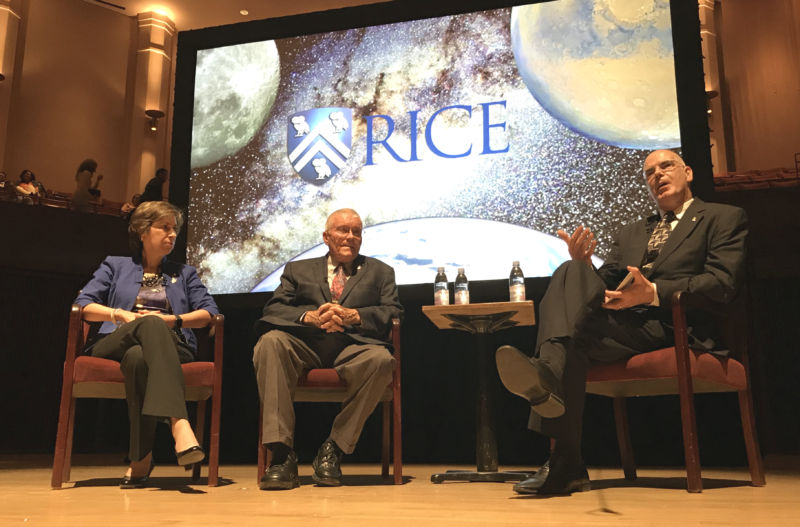
Ellen Ochoa is a four-time astronaut who has served as director of NASA's Johnson Space Center in Houston since 2013. As part of that job, Ochoa oversees a space center that trains astronauts for spaceflight missions, houses Mission Control, and manages the International Space Station and Orion spacecraft programs.
In recent years, the space center has also played a central role in preparing for and publicizing NASA's "Journey to Mars," the poorly funded effort by the agency to send humans to the red planet in the 2030s. Orion has been touted as a centerpiece of this strategy, and astronauts have talked about using what they've learned on the station and applying it toward going to Mars.
Now, however, key Trump appointees are beginning to talk about sending humans to the Moon before Mars. The administration's choice to serve as executive secretary of the National Space Council, Scott Pace, favors a return to the Moon. So does Trump's choice to lead NASA, Jim Bridenstine. It seems likely that, at some point, NASA's human destination will switch from "Mars" to the "Moon, then Mars," echoing the space policy first established during the administration of George W. Bush.
Earlier this month, on the 55th anniversary of President John F. Kennedy's Moon speech at Rice University, Ochoa appeared on a stage at the university alongside Apollo 13 astronaut Fred Haise. The director of the Rice Space Institute, David Alexander, asked Ochoa how Johnson Space Center would react to such a change in direction.
“Not incompatible”
"If we do see an administration that decides to make a little bit of a turn and focus a little bit more on the Moon, I think we're very well set up to do it," Ochoa replied. "It's not at all incompatible with what we're doing," she added.
NASA's current plan involves testing out the Orion spacecraft and Space Launch System rocket in two test flights between 2019 and 2023 before starting to assemble a "Deep Space Gateway" in an orbit near the Moon. This outpost would be used to test technologies in a "deep space" environment and could then serve as a staging area for missions to Mars or lunar operations.
"What we've really tried to do at NASA is leave a lot of options open, to develop the basic capabilities—the spacecraft Orion and the heavy lift launch vehicle—and then talk with other partners about what they are interested in doing," Ochoa said. "Then we have begun to build the infrastructure around the Moon, from which a variety of things are possible."
How much of the current plan will survive a rewrite by the Trump administration is unclear. For example, the Deep Space Gateway may be dropped from the budget in favor of a program to land cargo and crew directly on the Moon. What seems clear, however, is that Johnson Space Center, which played the leading role in the Apollo program, would be happy to play an important part in sending humans back.
reader comments
103